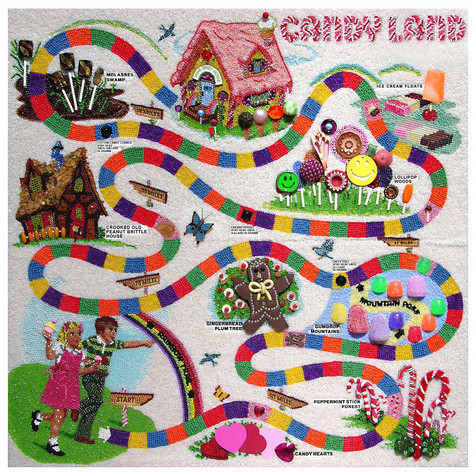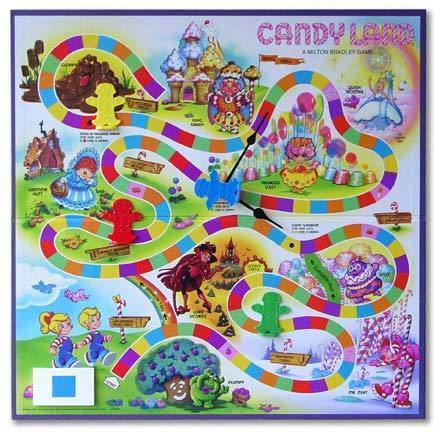Peggy Orenstein's Blog, page 3
May 5, 2013
Did Nancy Brinker Deserve a 64% Pay Raise?
Update: Ok, I changed the headline to this post because it was distracting people.
The new financials for Susan G. Komen for the Cure are out. According to the Dallas News, in 2012, the same year that the organization was roiled by the Planned Parenthood scandal (under Nancy Brinker’s leadership and based largely on her say-so), the same year Brinker was forced to step down as CEO in an attempt by the organization to regain public trust, the same year donations dropped as a result of her miscalculations, Komen also gave Brinker a 64% pay hike–from $417,000 to $684,717. Does that make sense?
Just so you know, a Charity Navigator survey found the median salary for the CEO of a not-for-profit organization to be $132,739.
Also, since Brinker is no longer the CEO of Komen, what is she doing in her “new role” for that kind of dough?
In case you’ve forgotten, the percentage the organization dedicates to research went down from 29% of revenues in 2008 to 15% in 2011.
I wonder, are the well-meaning Komen supporters “aware” of this?
I do not want to be perceived as encouraging people to abandon breast cancer as a cause. Quite the opposite. I want your good will, effort, time and money to matter to a disease that has touched so many of us. Please let Komen know what you think about their skewed research allocations and Brinker’s inexplicable pay hike. Contact them on Facebook tweet them at @komenforthecure Write or call them at :
5005 LBJ Freeway, Suite 250
Dallas, TX 75244
(1-877-465-6636)
You can change this.
And check out the good work of some of these other groups: Breast cancer Action; National Breast Cancer Coalition; Breast Cancer Consortium; Breast Cancer Fund; Susan Love Research Foundation.
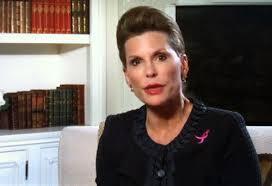
Nancy Brinker from the Dallas News: Talking pink, earning green.
Should Nancy Brinker Make More than President Obama?
The new financials for Susan G. Komen for the Cure are out. According to the Dallas News, in 2012, the same year that the organization was roiled by the Planned Parenthood scandal, the same year Nancy Brinker, was forced to step down as CEO in an attempt by the organization to regain public trust, Komen also gave Brinker a 64% pay hike–from $417,000 to $684,717.
Just so you know, a Charity Navigator survey found the median salary for the CEO of a not-for-profit organization to be $132,739.
Also, since Brinker is no longer the CEO, what is she doing for that kind of dough?
In case you’ve forgotten, the percentage the organization dedicates to research has gone down from 29% of revenues in 2008 to 16% in 2011.
I wonder, are all the well-meaning Komen supporters “aware” of this?
I do not want to be perceived as encouraging people to abandon breast cancer as a cause. Quite the opposite. I want your good will, effort, time and money to matter to a disease that has touched so many of us. Please let Komen know what you think about their skewed research allocations and Brinker’s outsize salary. Contact them on Facebook tweet them at @komenforthecure Write or call them at :
5005 LBJ Freeway, Suite 250
Dallas, TX 75244
(1-877-465-6636)
You can change this.
And check out the good work of some of these other groups: Breast cancer Action; National Breast Cancer Coalition; Breast Cancer Consortium; Breast Cancer Fund; Susan Love Research Foundation.

Nancy Brinker from the Dallas News: Talking pink, earning green.
May 3, 2013
“Hippest Town in NJ” Doesn’t Read the Bleeping New York Times!
I just got this press release. Made my jaw drop. Did they not know who they were writing to? I get that Thomas could have missed my blog post about this event. But come on, Dude. You’re in New Jersey. You’re a PR guy. The New York Times is your local paper. So let’s give him some publicity–feel free to email Thomas at the linke below and tell him what you think of “paint your town pink.”
I responded by sending both the above links with this note: ”You are REALLY writing to the wrong girl. I think you are wasting people’s time and money without doing anything to help eradicate breast cancer.”
From: “Thomas Paolella”
To: “Thomas Paolella”
Sent: Thursday, May 2, 2013 1:00:56 PM
Subject: FW: Giuliana and Bill Rancic are coming to NJ to discuss the importance of mammography
Just a reminder about Saturday’s event. If anyone from your outlet is able to attend and share in this special evening we would love to have you.
Hi there – I wanted to invite you or someone from your team to cover a truly inspiring event for your publication. I know you don’t traditionally cover local NJ events, but this is something truly newsworthy to a nationwide audience.
In just a few short weeks, Meridian Health will host its annual “Paint the Town Pink.” For the seventh straight year, volunteers, committees, businesses, physicians, and local officials will make this event a reality. Everyone joins forces for one common goal; to raise awareness of the importance of annual mammography. Beginning May 1, Paint the Town Pink will cast a wider hue across our area with an expansion that now includes 23 Monmouth and Ocean County towns, making the event the most represented to date. What began as an idea seven years ago has been transformed into a grassroots initiative that is changing lives in very tangible and meaningful ways.
Paint the Town Pink was started by Riverview Medical Center with the goal to encourage women aged 40 and older to pledge to have their annual mammogram, as well as raise funds to provide mammography to the uninsured and underserved in our community. Through a variety of special events and in-store specials from hundreds of businesses, and involvement from community groups, this year’s Paint the Town Pink will be “bigger and Pinker” than ever before!
Last year’s campaign featured the “Men in Pink” and highlighted the men that support the women in their lives. Bill Rancic came to Red Bank, NJ and gave a talk about how he supported Giuliana during her breast cancer diagnosis. Bill had such a positive experience with Paint the Town Pink that for 2013, Giuliana will be coming with Bill and are hosting an event together titled “Little Things” – flyer below. There will be a Pink Media Lounge at around 7:45 p.m., in which members of the media will have full-on access of both Giuliana and Bill and will be able to ask questions, take photos/video, etc.
For more information please visit www.PainttheTownPink.com. I thank you in advance for your consideration. I know you get pitched stories all day long and I appreciate you taking the time to read this. Even if you’re not able to cover the event, a brief mention on your website would go a long way in helping to spread the Paint the Town Pink mission. I know the event is on a Saturday, but it will be well worth it.
Thanks again,
Tom
Tom Paolella
Public Relations Manager
Riverview Medical Center
Bayshore Community Hospital
Office: (732) 530-2282 I Cell: (848) 203-7596
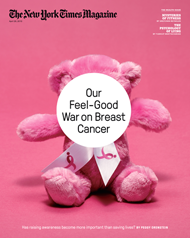
May 2, 2013
Seriously, Disney, I’m Trying to Take a Little Break Here– MUST YOU?
So, I was about to commend Disney for doing something right. Yes, I was. The front page story in today’s New York Times reported that the company stopped production of branded merchandise in Bangladesh in March, after the last disaster there: a fire that killed 112 people. To wit:
A Disney official told The New York Times on Wednesday that the company had sent a letter to thousands of licensees and vendors on March 4 setting out new rules for overseas production.
Less than 1 percent of the factories used by Disney’s contractors are in Bangladesh, according to the official, who spoke on the condition of anonymity. The company’s efforts had accelerated because of the November fire at a factory that labor advocates asserted had made Disney apparel. The Disney ban also extends to other countries, including Pakistan, where a fire last September killed 262 garment workers.
So good for them. Good for Disney for trying to show some leadership and ethics regarding how its products are made. I respect that.
Now back to discussing the depressing results.
Rebecca Pahle over at The Mary Sue alerted me to the news that on May 11 Merida from Brave will to be crowned the 11th Disney princess. You remember Merida, right? The one with the bow and arrow? The one who looked like this?

Well, not any more. As with the other Princesses, she has gotten a redesign, a pretty-sexy-skinny makeover to boost revenues. Voila, the new Merida:

There’s the hot hair, the coy expression. Also the obligatory exposed shoulders (moms tell me all the time that their preschool daughters are pitching fits and destroying their t-shirts because “princesses don’t cover their shoulders), slimmer waist, and the bow and arrow replaced by…what is that, a low-slung belt? And she has what appear to be high-heeled shoes. Or at least slimmer, pointier feet.
Inside the Magic, a blog promoting Disney and theme park events, says that Merida’s official royal ceremony will be well attended:
She will be joining existing Disney Princesses Snow White, Mulan, Aurora, Belle, Tiana, Ariel, Cinderella, Jasmine, Pocahontas, and Rapunzel in the line, all of whom are likely to make an appearance at the coronation. New hairstyles, makeup, and dresses were recently given to the princesses in a modern update to their looks, which are also now reflected at Disney’s theme parks .
Because, in the end, it wasn’t about being brave after all. It was about being pretty.
In case you’ve missed it, by the way, here’s the updated look of the other ten princesses:

I’m especially creeped out by Belle who appears to have had major surgery. Compare this new chickabiddy to the actual movie:
http://www.youtube.com/watch?v=tRlzmy...
Or, wait, maybe I’m more creeped out by the way they’ve changed Aurora (who used to be called Briar Rose).
Or, wait, what about what about the apparent lobotomy that Rapunzel has had? OrAnd Cinderella looking like Taylor Swift? And Pocahontas? Tiana looks like she’s not getting enough to eat at that restaurant of hers. And Mulan, poor, poor Mulan. And here’s what Jasmine used to look like:
http://www.youtube.com/watch?v=-kl4hJ...
Snow White and Ariel were always especially vapid so I don’t have much to say there.
I hate to be in the position of defending the “old days” when the princesses looked “normal” (because, really, it’s all relative and it’s not like I was happy with them before this). Still, check out this pic, also from Inside the Magic, of the latest princess lineup including the new Merida:

Look at that head position on poor, exposed-shouldered Merida! In addition to everything else, they’re pushing the brown girls slowly but surely to the edges. Tiana is thinking, “Wait, I only got one year up front? One lousy year to make up for nearly a century of racism (though to be fair, the ugliness extended well beyond Disney’s depiction of African Americans)? Meanwhile, Mulan looks WEIRDER THAN EVER. She doesn’t even look human she’s been so Orientalized and botoxed.
This is what she used to look like:

I’ve always said that it’s not about the movies. It’s about the bait-and-switch that happens in the merchandise, and the way the characters have evolved and proliferated off-screen. Maybe the problem is partly that these characters are designed in Hollywood, where real women are altering their appearance so regularly that animators, and certainly studio execs, think it’s normal.
Ok, you know what? I’m so tired. Someone else take over here and make some pithy, salient points about the impact on girls of being bombarded with skinny, pretty, sexy messages and endless consumer products that tell them from the earliest ages that how they look is who they are, ok?
I’ll just leave you with that moment of promise, the trailer from Brave when we thought maybe Disney was showing some leadership and ethics not only in how they made their products, but the actual products they made.
http://www.youtube.com/watch?v=TEHWDA...
Make Komen Feel the Squeeze….
I was tempted to headline this “Komen: What a Bunch of Boobs!” But that seemed in poor taste…..
In my piece in last Sunday’s NY Times Mag I wrote that after our interview (interesting timing) Komen finally took off its homepage the misleading stat about the benefits of mammography. Steven Woloshin and Lisa Schwartz had called them out originally in their excellent “Not So” series in the British Medical Journal. According to the ever-brilliant Gayle Sulik at Breast Cancer Consortium, however, you can still find the stat displayed elsewhere on Komen’s site.
Maybe the PR folks just overlooked this one instance as they hastened to expunge the embarrassing evidence of science denialism from the site. But Sulik notes,
As Komen’s bold messaging continues to be erased from its materials if not from collective memory, is it enough for the group to simply step back and quietly disassociate from a misinformed pro-mammogram campaign?
Yeah-what she said! How can Komen deflect, disassociate from and deny the impact of their role in over-selling mammography when, according to Sulik’s “short list” they continue to perpetuate it in their ”educational” materials and affiliate messaging (she points to such items as ”Early detection of breast cancer saves lives and thousands of Orange County women,” and “Komen Austin was able to fund over 3,000 mammograms. I think of that as 3,000 lives saved.” ). Click over to the blog post yourself to read what Nancy Brinker just won’t stop saying……
Komen is not getting the message. A friend who attended the White House Correspondents’ dinner last week told me Brinker was there (don’t know why…) and commented, “We’ll soldier forward despite the critics.” How about learning from a critique, using it to make a better, stronger, more effective organization? On our joint appearance on KQED-radio’s Forum last week, after Dr. Laura Esserman urged advocates and the public not to be afraid of change, Komen’s representative immediately disengaged by listing the positive things the organization has done. She clearly has her tried-and-true sound bytes and wasn’t going listen, only, like Brinker herself, try to duck criticism by playing the victim.
If you are a Komen supporter–or even if you’re not–please keep the pressure on them to provide a truly balanced view of screening, to stop pinkwashing and to put more of their research money–more of ALL their money– towards prevention, environmental links to cancer, the mechanisms and treatment of metastasis, better understanding of DCIS, social inequities and on and on. Tell them what they’ve allocated isn’t enough. Meanwhile, there are other groups who need your help–Breast Cancer Consortium, Breast Cancer Action, National Breast Cancer Coalition, Breast Cancer Fund, Susan Love Research Foundation. See which of those moves you and jump on board.
As Sulik writes:
Mammography has been the rallying cry for breast cancer awareness for decades. And, it has helped to build an economy that focuses not on primary prevention but on the management of risk.
Time to make a change.
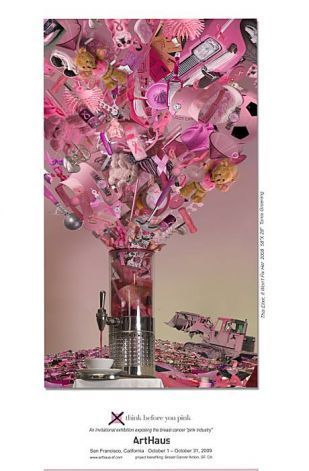
Photo: “This Elixir Won’t Fix Her” by Torrie Groening.
Update: More Komen deflection evident in the comments of this Reuters post on my piece. Really smart responses following….
May 1, 2013
What’s Next, Porn Legos?
When I started my career, back in the mid-1980s, I was hired to be an editorial assistant at a certain top tier magazine in New York City. As part of the job interview I took a typing test. I was also informed that the guy I’d be working for had a reputation for groping his assistants. “Can you handle that?” I was asked. Not “If it happens report him.” Not “He is being brought up on charges.” Not even “We’re trying to deal with it and we’re sorry.” Just “Can you handle that?”
WWAMD? I thought (That’s “What Would Ann Marie Do?“)

Of course, I said yes. I worked for the guy for over a year and “handled it” by keeping six feet away from him at all times–believe me, I earned my $13,500 salary. (Note: I also worked for two amazing, generous, encouraging editors and mentors to whom I owe my career: Adam Moss and David Hirshey).
I thought we’d evolved since then (this was pre-Anita Hill’s testimony in the Clarence Thomas hearings) but my heart sunk while reading Amanda Hess‘ amazing post on yesterday’s XXFactor about Lego’s latest foray into reinforcing sexism among children:
When journalist Josh Stearns introduced his son to the world of Lego this year, he was disappointed to find that in addition to its trademark building blocks, the company now produces a Lego-branded sticker set that articulates the innermost thoughts of its little plastic construction workers. Alongside phrases like “MEN AT WORK” and “GETTING DIRTY,” the set includes an image of a Lego worker at rest, leaning back in a hard hat and a pair of cool-dude sunglasses, shouting “HEY BABE!” at an unseen target. It’s marketed to kids aged “1 to 101.”
Here is the photo that Stearns put on his tumblr:

Seriously. WTF?????
Meanwhile, my daughter is getting make-your-own messenger bags for her birthday with iron on transfers that say “spoiled” and “brat.” (Not by Lego, I should say–this was a “craft” present a couple of years back).
As I’ve said before, Gary Cross, an historian of childhood and author of the excellent Kid Stuff: Toys and the Changing World of American Childhood once told me that toys communicate to children our expectations of their adult roles. Criminey!
I wrote an editorial in the New York Times when Lego introduced its friends line discussing why promoting gender segregation in toys was a bad (though lucrative) idea. The wonderful women and girls at Spark.org also launched a petition that garnered so many thousands of signatures that Lego met with them to discuss how, at the very least, they could push the Friends line past hair salons. The company seemed to respond, at least a tiny bit, at least for the girls.
Not for boys. Apparently Lego has no problem reinforcing the idea among our sons that girls are “other,” that they are subtly inferior and, ultimately, objects for their eventual enjoyment (and current scorn). I don’t want the boys I know growing up with that message. I don’t want the boys my daughter some day learns with, dates, works with, marries, raises children with (yes, I am already dreaming about being a grandma, so sue me) believing sexual harassment is “funny” or in any way ok. That’s why I love the Sanford Harmony Program’s attempt to develop curriculum that, from preschool onward, encourages friendship and mutual understanding between boys and girls.
Stearns, who is doing his best to raise a decent, caring human (bless his heart) writes about his own experience going up against Lego. Their first response was classic defense: lighten up, it was a joke:
Charlotte Simonsen, Senior Director at LEGO’s corporate communications office told me that “To communicate the LEGO experience to children we typically use humor and we are sorry that you were unhappy with the way a minifigure was portrayed here.”
Ace journalist that he is, he kept pushing and subsequently received another note, this time, from Andrea Ryder, the head of the LEGO Group’s Outbound Licensing Department. She wrote: “I am truly sorry that you had a negative experience with one of our products […] the product is no longer available and we would not approve such a product again.”
That’s progress. Stearns writes that he appreciates Lego’s responsiveness. I do, too. I’m also glad the stickers are off the market. But still. How did something like that get through their vetting process? And, if you spend any time on this blog, you know that these incidents (across toyland) are not rare.
Yeah, it’s one toy. One little toy. But one among so many. As Stearns writes:
If we don’t call out these things when we see them, then even the little pieces of culture, like a pack of stickers, can serve to normalize sexist behavior and harassment. If you care about these issues here are some great resources and organizations to follow and support:
Hollaback - http://www.ihollaback.org/
Collective Action for Safe Spaces - http://www.collectiveactiondc.org/
Stop Street Harassment - http://www.stopstreetharassment.org/
Ms. Magazine - http://msmagazine.com/
Women in Media and News - http://wimnonline.org/
SPARK Movement - http://www.sparksummit.com/
Miss Representation - http://www.missrepresentation.org/
Couldn’t have said it better. Thanks, Josh.
Photo from a previous post on Lego:

April 28, 2013
Forget Pink–Remember Rose
There were a couple of things that got cut from my New York Times Magazine piece on breast cancer that I wish I could’ve squeezed in. One is kind of wonky, which is why it was dropped, but super important. It’s about data collection, based on a discussion I had with Dr. Peter G. Bach at Sloan-Kettering:
It surprised me to learn how little cancer data the U.S. collects, though it is vital to improving treatment. We know how many cases of cancer there are and the stage of diagnosis, but unlike Scandinavian countries, we don’t keep track of which therapies are used or what happens to patients over the long-term.
I could write a whole piece on publicly accessible, non-proprietary data collection and why we need to do it. But I just wanted to at least put it out there. Breast Cancer Action talks a lot about this one, and they are right. BCA is also leading the charge against the pernicious practice of gene patenting, which was just argued in the Supreme Court. Gayle Sulik discusses this one beautifully in a recent blog post on Psychology Today’s site
The other thing that got cut was a bit of history on the divergence in the strands of the breast cancer movement. Again, I only had so much space and a lot to cover, but I think useful in thinking about one’s choices when considering supporting various groups. Here’s an excerpt (which never even got to the point of being fact-checked by the Times–it was really a draft):
It is hard to remember now, but until the early 1970s breast cancer was the Voldemort of diseases, its name never spoken aloud, omitted from a woman’s obituary. If you found a lump, you obediently submitted to the surgeon’s table: maybe you would wake up with a small incision from a biopsy that turned out to be benign. Or you would find yourself mutilated without your knowledge by a Halsted radical mastectomy, the standard treatment of the day, in which the entire breast, chest muscles and lymphatic tissue were removed. Either way, you were expected to keep your experience, and feelings about it, to yourself: to pull up your socks—or shove them in your bra—consider yourself lucky to be alive and get on with it.
That began changing in 1973, when Shirley Temple Black, the former child star, went public with her breast cancer in McCall’s magazine. The following fall, First Lady Betty Ford talked publicly about her diagnosis (as did Second Lady Happy Rockefeller, who was diagnosed two weeks later). By 1976, Betty Rollin’s memoir of her struggle with the disease, First, You Cry, became an international bestseller (and later a TV movie starring Mary Tyler Moore). And with that, a stigma was shattered.
Temple, Ford and the rest made telling one’s personal cancer story socially acceptable, even, in their defiance of shame, vaguely political. However, they didn’t question medical or scientific authority. That role fell to the nascent feminist health movement, and, specifically, a journalist named Rose Kushner. Kushner was diagnosed the same year as Betty Ford; through mutual friends, begged the First Lady to resist the paternalistic, one-step procedure for biopsy and mastectomy. Ford refused, saying, “the President has made his decision.”
Kushner spent the rest of her life—which would turn out to be sixteen years—challenging the medical establishment. It was Kushner who, undeterred when she was booed off the stage during a meeting of the Society of Surgical Oncology, fought, ultimately successfully, to separate a biopsy from cancer surgery; it was Kushner who fought to replace the radical Halsted mastectomy with one that was less disfiguring yet equally effective. And it was Kushner who started the first breast cancer information hotline that was run by women and for women.
There are now hundreds of breast cancer advocacy organizations and those two early strands sometimes overlap, but, as Gayle Sulik, author of Pink Ribbon Blues, has pointed out, the fundamental philosophical division between those who challenge the medical status quo and those who promote it persists. It can be seen in debates over how (and from whom) funds should be raised, how that money is dispersed, and what, precisely, “awareness” should encompass. Heirs to Kushner’s oppositional stance tend to reject the pink ribbon. They push for lay-person involvement in grant-making decisions. They question the efficacy of both treatment and diagnostics. They see potential conflicts of interest in partnering with corporations or Big Pharma. The most well-known include the National Breast Cancer Coalition, which since 1992 has lobbied Congress for $2.8 billion in funds for the federal Breast Cancer Research Program overseen by the Department of Defense; Breast Cancer Action, an industry watchdog group best known for coining the term “pinkwashing”; and the Breast Cancer Fund, which focuses on potential environmental links to the disease.
Komen, meanwhile, is heir to the Betty Ford model–they speak out, yes, but they don’t truly challenge. They embrace private sector solutions, partnerships with corporations and organizations, including, as I say in the piece, those that harm public health: Chevron. Frackers. I care about breast cancer, passionately, but not at the expense of larger issues of public health. I am a fan of Breast Cancer Action’s Think Before You Pink campaign, which coined (I think) the word “pinkwashing.”
Ultimately, I think the pink ribbon with its assurances of hope and progress lull us into thinking enough is being done. It lulls us into thinking we can keep ourselves safe. It silences us in the name of voice. Meanwhile, women die. Meanwhile, women are over-treated, destroying their lives and well-being. Women with DCIS, rather than being celebrated as triumphs of early detection, should be FURIOUS that they will never know if their treatment was necessary or not. Rather than thanking pink ribbon culture, they should be protesting its complacency and myth-mongering, bringing their pressure to bear on making change so their sisters, mothers, nieces, daughters do not have to go through the uncertainty that they did.
I am sobered and inspired by Kusher’s example. She, too, is a journalist, diagnosed young with cancer. She stood up to the status quo, stood up to ridicule, refused to yield to “good enough.” I don’t know why she has been virtually lost to history–I had never heard of her until I started reporting this story. Maybe there is more there than I know. But it seems to me that it’s time to bring her back.
I don’t stand with pink–but I do stand with Rose.
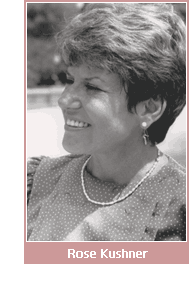
(photo from RKBAC.org)
April 25, 2013
It’s True: I Was Rescued By a Prince
My cover story in the New York Times Magazine is up: it’s called “Our Feel-Good War on Breast Cancer.” As a journalist I write about all kinds of things for all kinds of reasons. Sometimes I write for fun. Sometimes I write because I have a great story to tell. Sometimes I write to pay the rent. Sometimes I write because if I don’t say something about something I see as wrong I will absolutely explode. This is one of those. And it won’t make you feel so good.
That said, I do want to share another story that didn’t belong in that piece, that has not so far belonged in anything I’ve written but that truly is a feel-good cancer anecdote: it’s about how amazing and wonderful and compassionate people can be.
The background: In case you don’t know, last July I found a lump in my breast; it turned out that the cancer I had 15+ years ago had returned.
I know. Fifteen years later!
But I’m so very lucky—the kind of cancer I’ve had is low grade, slow moving and unlikely to have spread. While there are no guarantees, my odds of surviving, with surgery and a five year course of Tamoxifen, remain pretty damned good.
Unfortunately, another lumpectomy would require more radiation. Since you can’t irradiate the same body part twice my only option was a mastectomy. Radiation also destroys the elasticity of your skin, making reconstruction with an implant a challenge. I considered just going flat, but I felt that for me, reconstruction would make it easier going forward.
My best option was something called a DIEP-Flap Reconstruction in which the docs take the fat from your belly make it into a breast. The upside is that the reconstruction is your own flesh (and yeah, there’s my newly flat stomach….). The down side is that it’s a BIG honkin’ surgery involving a week on your back in the ICU and a looooong recovery at home. And, of course, as with all reconstruction it has no sensation. I don’t know why no one seems to mention that. It feels more or less like a ball of socks appended to my chest wall.
Anyway, I have a lot to say about reconstruction—the pros and cons of it, the weirdness of coming out of all of this looking better than when I went in, what it’s like to have a NEW BELLYBUTTON (they removed the old one—if they didn’t put another in I’d look like a space alien) but I’ll save that for another time. I’ll also save for another time a discussion of the loathsome new “reconstruction awareness campaign” (read the brilliant Gayle Sulik on them instead).
So, here is what I wanted to say today:
This procedure, this DIEP thingamabob, is highly specialized microsurgery. Not a lot of docs do it. The two who were most highly recommended to me were both outside my insurance network. The first one said, Well, you’ll have to pay the difference out of pocket but we can work out a payment plan. It would cost me roughly $20,000. I didn’t want a boob that badly. Still, it was extremely upsetting to think it wasn’t a choice but financial necessity.
Hello, American Health Care System. Never think it can’t happen to you.
Oh, wait–this is a feel-good story.
Enter doc number two. I’m not sure he’d want me to name him so I won’t. Just think of him as Prince Charming. When I told him about my insurance woes Dude didn’t skip a beat. “Don’t worry about it,” he said–he’d take whatever the insurance gave him as full fee.
At first I didn’t think I’d heard right. “Why would you do that?” I asked.
“Because,” he responded, “it’s the right thing to do.”
This guy doesn’t know me. He didn’t know what I did for a living or who I work for (that is, he wasn’t angling for media coverage). HE’S JUST A MENSCH.
Are you tearing up? Because I did.
We shouldn’t have to depend on random acts of kindness in health care, but that’s where we are. That’s where I was. And as horrible as having cancer again has been, as difficult as the surgery was, I felt blessed the entire time by the generosity and compassion of this man. Cancer is not a gift, not at all, but he was.
Sometimes, you really can find a Prince.
April 23, 2013
This Post Makes Me Hungry…And Sad.
A reader on Facebook commented on how the imagery on the board game Candyland has changed over the years. I sometimes bring that up when I give talks but since I’ve got your attention, let’s just take a peek together, shall we? Here is the original Candyland, circa 1949.
Yum. Here is the game in 1978:
I dreamed of those ice cream floats….
Things begin to change more significantly in the 1980s. That’s when Candyland ditched the Dick-and-Jane outfits for generic his-and-hers overalls:
They also added some friendly candy characters: Plumpy with his plum tree, Mr. Candy Cane, Gramma Nutt, Princess Lolly, Queen Frostine. More on some of them in a moment.
Then we hit 2010. On the upside, Milton Bradley finally recognized, at least in some versions, that there are children who are not white and blonde (nothing against blonde white kids–I was one myself–I’m just saying):
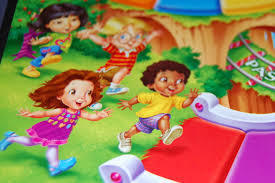
Beyond that, though…Yikes! Check out today’s board!

In case you can’t see it: here’s the new Princess Lolly:

And Queen Frostine turned into a Bratz doll:

Stuff changes. I know that. What played in 1949 is not going to play in 2013. Still, when the changes are all about skinny and pretty (and exponentially larger portion sizes–there’s a mixed message for you) you have to be leery. In addition to those characters, the game pieces themselves have slimmed down, Gramma Nutt has been replaced by the more fashionable Gramma Gooey (who has definitely had some work done) and Mr. Candy Cane has been replaced by some guy–maybe a prince?–whose giant muscles are only exceeded by the size of his triple-decker ice cream cone.
I’ve written before about other classic toys that have, without our notice, had skinny makeovers. When our kids play with toys that we played with we assume that they are the same toys. It’s kind of back to the Disney Princess thing–I watched “Cinderella” as a kid, so what’s the big deal? The big deal is that it’s not the same at all. It just has the same name. And the images our kids–boys and girls–are exposed to from the youngest ages are so distorted and so often sexualized (I mean, hubba-hubba Queen Frostine!) that it is no wonder that girls are self-sexualizing ever earlier.
I think a lot about something that Gary Cross, an historian of childhood, once told me: that toys traditionally have communicated to children our expectations of their adult roles. What are we telling girls we expect of them with this?
March 4, 2013
Shopping as the New Prince
When I first started writing about the Disney Princesses, people assumed my beef was with the girl waiting around to be rescued by the handsome prince. But honestly? I don’t get that passive vibe from little girls playing princess or from the merchandise sold them. For instance: how often do you see a prince doll at Toys’R'Us? (Though, personally, I think Prince himself is a doll…).
No, today’s princess is not about romance: it’s more about entitlement. I call it “girlz power” because when you see that “z” (as in Bratz, Moxie Girlz, Ty Girlz, Disney Girlz) you know you’ve got trouble. Girlz power sells self-absorption as the equivalent of self confidence and tells girls that female empowerment, identity, independence should be expressed through narcissism and commercialism.
Think of it as the Kardashinization of girlhood (or maybe just the apocalypse): whether it’s craft kits, science kits, summer camps, birthday parties, dolls, games it’s all about the bling.
One of the things that set me ticking on Cinderella Ate My Daughter was wondering whether the very thing that we trusted to protect our daughters –Princesses and, by extension, the Disney Brand–was actually doing the opposite: priming them for early sexualization and an obsession with appearance. So it was important to me to look at what the brand hoped to move girls to next. And so I give you the brand new Disney City Girl Game.
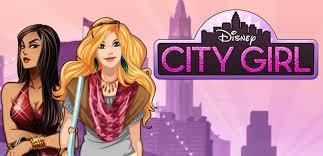
Here’s the description:
With suitcase in hand, it’s time to leave your small-town life behind and head to the big city to make your dreams come true! Do you have what it takes to skyrocket to stardom? In the spirit of Sorority Life, Disney City Girl gives players the chance to engage in a stylish and aspirational virtual world!
As a recent New York transplant, the player will explore the city with the help of her fabulous friends, from BFF Jenna to adventurous Auntie Kate. She’ll discover the best places to shop and hang out, choose from a variety of glamorous career paths, and visit exotic locations. As she progresses through her career, your City Girl will accrue style points, continually decorating and upgrading apartments, expanding her wardrobe, and facing off with her friends in “Daily Look” fashion competitions! From a grungy studio to a Park Avenue penthouse, from overworked intern to successful CEO, from country bumpkin to glamour girl, City Girl will keep you coming back again and again.
Have the makers of this game seen the TV show “Girls?” Because last I checked, there was a little more to deal with in the Big City than snapping up some Louboutins (retail, yet). Like trying to get a job. Astronomical cost of living. Rent. Grossness. Bad boyfriends. And messy, messy life.

I did the moving-from-the-midwest-to-the big-city thing myself once upon a time, living on equal parts moxie and cluelessness. Just the other day I was recalling those pink-and-yellow fur walls at the Palladium. And my daughter begs for the story of why I will never eat pizza again. I will not even go into my litany of giant cockroach and rat stories or what it was like to live next door to a crack house. That may be too much realism for a game–or maybe just the right amount. There could be an amazing video game about moving to the big city, right?
You may have noticed above that Disney promises “a variety of glamorous career paths.” Right now that extends to being either a chef or a fashion designer. Yep, that’s it. Players land an immediate paid internship in their chosen field (now that’s a fairy tale). To earn a promotion you have to work hard: the only way to advance is to collect “style points” with which to upgrade your apartment and wardrobe. Yeah, that’s right: the only way to move up at professionally is to shop for better clothes and decor. Oh, and you can compete against “friends” in the game’s “daily look” competition. Because whatever else is going on, you still want to be the fairest of them all.
The girls who play this game may be up for a rude awakening some day.
Seth Meyers mentioned Disney City Girl on SNL’s Weekend Update on Saturday.
Disney has developed a new video game called ‘Disney City Girl,’ which lets players shop and work their way up the social ladder. To win, all you have to do is defeat all the progress women have ever made.
Really, I don’t have a lot to add to that….
Here’s the game’s trailer.
P.S. Thanks to Robin Wolaner for making me aware of this one.
Peggy Orenstein's Blog
- Peggy Orenstein's profile
- 722 followers



